Atlantic Monthly Contributors's Blog, page 210
March 17, 2016
How Did the Oklahoma City Bombing Shape Merrick Garland?
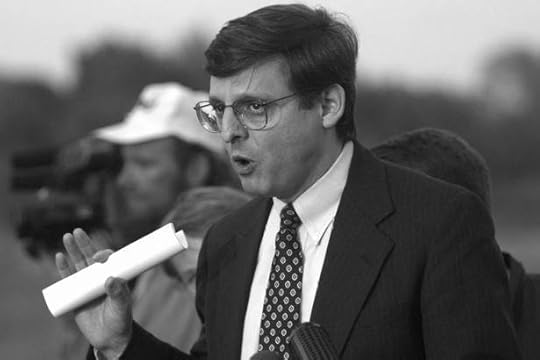
In announcing his nomination of Merrick Garland for the Supreme Court on Wednesday, President Obama made special mention of Garland’s work in the wake of the Oklahoma City bombing.
“In the aftermath of that act of terror, when 168 people, many of them small children, were murdered, Merrick had one evening to say goodbye to his own young daughters before he boarded a plane to Oklahoma City,” Obama said. “And he would remain there for weeks. He worked side-by-side with first responders, rescue workers, local and federal law enforcement. He led the investigation and supervised the prosecution that brought Timothy McVeigh to justice. But perhaps most important is the way he did it. Throughout the process, Merrick took pains to do everything by the book.”
Related Story
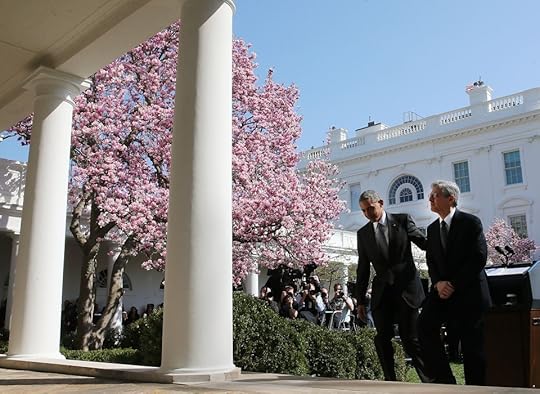
Merrick Garland Is a Great Pick that May Not Matter
As the president noted, Garland has called his work there “the most important thing I have ever done in my life.”
The April 19, 1995, bombing of the Alfred P. Murrah Federal Building in Oklahoma City killed 168 people, including 19 children. It was the deadliest terrorist attack on American soil until September 11. Timothy McVeigh was ultimately convicted of the bombing and executed in 2001. Terry Nichols was sentenced to life in prison without parole. A third man, Michael Fortier, testified against McVeigh and received a 12-year sentence for failing to warn the government about the planned attack.
What was Garland’s role in the case, how did it affect him, and does it offer any window into how a Justice Garland might approach the law?
At the time, Garland was principal associate deputy attorney general, a top aide to Deputy Attorney General Jamie Gorelick. When the bombing happened, Janet Reno’s Justice Department quickly took command of the case, sending Garland and Gorelick to Oklahoma, as Obama noted Wednesday. Garland was on the ground on April 21, two days after the bombing. “He not only volunteered,” Gorelick told The New York Times in 2010, “he basically said, ‘You need to let me go.’” Charlie Savage wrote:
Former colleagues also recalled that Mr. Garland insisted on doing the investigation by the book, like obtaining subpoenas even when phone and truck rental companies volunteered to simply hand over evidence, to avoid any future trial problems. He also made sure there was a prosecutor responsible for keeping victims and relatives informed about the case as it developed.
But Garland’s direct work on the case was short-lived. Later that spring, he was promoted to lead the Justice Department’s criminal division and returned to Washington, replaced as lead prosecutor by Joseph Hartzler, but retaining a supervisory role from D.C. According to the Times, Gorelick rejected Garland’s request to directly try the case. Hartzler told Savage that Garland had not micromanaged him.
“I used him as a sounding board,” he said. “He didn’t tell me what to do, and he never made me feel as though I needed to consult him before making a decision. But I often consulted him because he gave such good advice.”
Stephen Jones was the lead lawyer for McVeigh in the case. When I reached Jones on Wednesday, the first thing he told me was that he was “a partisan Republican. I’ve been a Republican since I was 12 years old.” (Jones was the GOP nominee for Senate in Oklahoma in 1990, but lost.) Then he proceeded to praise his former opposing counsel at length.
“I agreed with everything the president said about Judge Garland,” Jones said, adding that he was encouraging the Sooner State’s two Republican senators to back Garland. “Personally he’s above reproach. He has integrity. He has the skills.”
“I agreed with everything the president said about Judge Garland. Personally he’s above reproach. He has integrity. He has the skills.”
He remembered Garland as a responsive, humble, and meticulous prosecutor in the Oklahoma City case. “He certainly returned every phone call,” Jones said. “If he said he was going to get back in touch that afternoon, you could rest assured that by 5 o’clock he did that.” He said Garland would dial Jones directly and gave him his cell phone, rather than working through secretaries—a level of courtesy to be hoped for but not always met in officials at his level.
The government’s approach to the case, under Garland’s direction, was fair, Jones said, though he added, “I think some of the decisions made later on boiled down to a pragmatic approach” not to pursue other accomplices. Jones said he was most impressed by the efforts Garland made to meet his request for a private meeting with Attorney General Reno to discuss whether the government would seek the death penalty. “I was pleasantly surprised and pleased that Merrick was willing to arrange it,” he recalled. (The meeting was ultimately canceled after McVeigh withdrew authorization to hold it.)
That seemed to fit with a generous mindset, Jones said. “I watched him do the preliminary hearing with Terry Nichols, and afterwards he walked over and shook [Nichols attorney Michael] Tigar’s hand and said, ‘Well, I’m impressed,” Jones said.
Tigar, for his part, did not recall the incident, and remembered the government lawyer as being a distant figure in the case.
“How he got the reputation as having a great deal to do with it—you couldn’t prove it to me.”
“Garland showed up for a bail hearing ... and that’s the only time I can remember him doing anything in the case,” Tigar said. “He had been sent out from Washington, D.C., and that was it. How he got the reputation as having a great deal to do with it—you couldn’t prove it to me.”
At the Justice Department, Garland went on to supervise other high-profile bombing cases, including the 1996 Atlanta Olympics attack and the prosecution of the Unabomber.
It's tough to predict how these experiences might influence Garland’s judicial philosophy. “I don’t know that it would necessarily be indicative of what type of justice he would be,” Jones said. One possibility, however, is that Garland’s experience prosecuting these horrific, high-profile cases has led him to be favorable to the government in criminal cases on the bench.
As Tom Goldstein wrote in 2010, when Garland was previously considered for the high court, the judge “rarely votes in favor of criminal defendants’ appeals of their convictions.” Goldstein added:
Most striking, in ten criminal cases, Judge Garland has disagreed with his more-liberal colleagues; in each, he adopted the position that was more favorable to the government or declined to reach a question on which the majority of the court had adopted a position favorable to a defendant …. One might expect that a judge with such a record on criminal law questions would be generally quite conservative across the board. That does not appear to be true, however.
On one occasion in the Oklahoma City case, Garland displayed some skepticism of the presumption of innocence. Tigar, defending Nichols, pointed out that his client had turned himself in to the police shortly after the bombing. (McVeigh fled after the bombing.) Quoting the Bible, Tigar said, "The guilty flee when no man pursueth, but the righteous are as bold as a lion.” Garland dismissed the contention out of hand, with a somewhat confusing reply: “He came in voluntarily after he knew he was being looked for. That does not suggest innocence.” (Would running away have been more exculpatory?)
For progressives worried about Garland’s progressive bona fides, and for conservatives and liberals who admired the late Justice Antonin Scalia’s frequent stands on the side of defendants, statements like this may cause unease.
So, too, might Garland’s record on national-security issues. Ben Wittes, who has tended to back greater government powers in the fight against terrorism, writes on Lawfare that Garland was Gorelick’s right-hand man at a time when “Gorelick was attempting a certain degree of integration between spies and cops, the Justice Department faced major espionage cases, and it sought and received expanded surveillance authorities under FISA.” Yet Garland also made a crucial 2013 ruling on drones, demanding the Obama administration provide more information.
In other words, it’s tough to trace direct lines through Garland’s pre-bench career to try to understand what sort of justice he’d be. That’s probably exactly how he, and the president, would like it.

March 16, 2016
The Americans’ Marriage Faces Its Greatest Test Yet
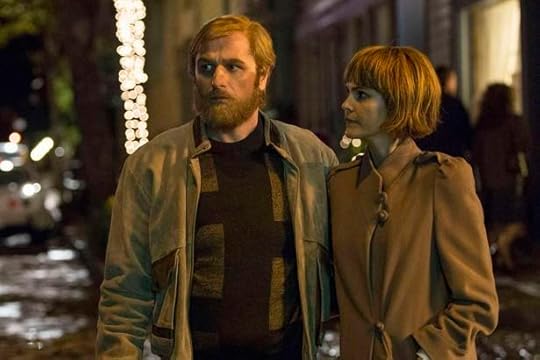
For three seasons now, The Americans has dodged and weaved around the matter of its characters’ integrity. While the show remains as complex and nuanced as ever, the new season of the FX drama begins with a hint of serious escalation for both its central couple and viewers. In Wednesday night’s premiere, an informant hands a biological weapon to the KGB sleeper agents Philip (Matthew Rhys) and Elizabeth (Keri Russell), and the horror on their faces may give answer to the question the show has asked all along: How far is too far to go in pursuit of a Cold War victory?
Related Story

A Long-Anticipated Revelation Reinvigorates The Americans
Already, Philip and Elizabeth have crammed the corpses of innocent bystanders into suitcases, engaged in coercive romantic relationships with teenagers, and created a sham marriage with a State Department employee that’s lasted years. Through it all, The Americans has stayed compelling because it lets the impact of every horrible deed hit the audience as hard as it hits its protagonists. But now, its heroes are slowly transforming from old-fashioned spies into out-and-out terrorists, and in the first few episodes of season four, they seem ready to crack. The audacious gamble at hand centers around how long viewers can stick with the Jenningses before they crack, too.
Philip and Elizabeth’s union, arranged years ago by the KGB, has always offered a twist on the stereotypical ’80s nuclear family, where a husband and wife married too young, got wedged into a dull suburban routine, and stayed together for the sake of their kids. Last season, their loyalties and their union were tested as the Soviet Union demanded they groom their daughter, Paige (Holly Taylor), as a next-generation sleeper agent—an idea that appealed more to Elizabeth (who desires to share more with her daughter) than Philip (who wants for her to have a normal life). Paige now understands that her parents are spies, but has only been given a sanitized version of what they do. The tension over this deception ratchets up quickly this season as the family’s internal battles continue.
Meanwhile, the Cold War intensifies, with grave consequences for most characters. The biological weapon given to the spies by a disgruntled informant played by the great character actor Dylan Baker (who’s long excelled at portraying grumpy grey functionaries nursing dark secrets) suggests that the KGB’s tactics will grow increasingly desperate as the Iron Curtain begins to crumble. This isn’t just plot context: It raises the stakes of the battles in Philip and Elizabeth’s marriage. Even if Paige isn’t in the hands of Soviet monolith that brought them to the United States, she will doubtless face a very uncertain future.
That uncertainty is what drives the fourth season to be as consistently compelling as the previous three. Viewers presumably won’t wonder about what will happen to the Berlin Wall or Mikhail Gorbachev so much as whether Philip and Elizabeth can throw off the weight of their evil acts, or at least help their children escape them. The fourth season premiere, “Glanders” (named after the deadly virus handed over by Baker’s character), begins with a flashback to Philip’s youth and the first murder he committed, a memory he’s trying to unburden himself of. He still attends the Est self-help seminar (one of the many ’80s fads that litters the show’s margins) to try and deal with his guilt, but is unable to discuss his sins in public. He also lets his sham wife Martha (Alison Wright) learn more about his deception than she ever has before, a decision that should have major repercussions.
Our heroes are slowly transforming from old-fashioned spies into out-and-out terrorists.
The virus Philip has to hold onto makes for a powerful, if obvious, metaphor for the greater evil he’s burdened with. As the nations he’s caught between escalate their tactics, he and his victims pay the human cost. Meanwhile, Paige is asking more and more questions about what her parents do at night; Elizabeth replies by insisting that her work revolves around getting people to trust her in order to help build a more cooperative future in a world racked with conflict. The tidy, idealistic picture is clearly meant to appeal to a teenager who campaigns for nuclear disarmament and follows a friendly youth pastor preaching for world peace. The audience knows the truth, but The Americans’s showrunner, Joe Weisberg, mines exquisite drama from the intricacies of each lie being told, as all of the show’s alliances continue to teeter on the brink of disaster.
It feels almost futile to advocate for new viewers to jump on board with The Americans, which has drawn consistently mediocre ratings on FX but equally consistent rapturous praise from critics. The show still feels like the closest heir to Mad Men and Breaking Bad, the last great consensus prestige dramas on television, but it may not be discovered widely until after it’s gone and exists only on some streaming website (its earlier seasons can be viewed right now on Amazon Prime). Weisberg has long since stopped caring about catching newcomers up, and instead seems ready to start barreling towards a conclusion. We know what will happen to the Soviet Union, but for the show’s remaining fans, Philip and Elizabeth’s strained union is the reason to stay on board. This year it will be tested in unimaginable ways.

The Americans' Marriage Faces Its Greatest Test Yet

For three seasons now, The Americans has dodged and weaved around the matter of its characters’ integrity. While the show remains as complex and nuanced as ever, the new season of the FX drama begins with a hint of serious escalation for both its central couple and viewers. In Wednesday night’s premiere, an informant hands a biological weapon to the KGB sleeper agents Philip (Matthew Rhys) and Elizabeth (Keri Russell), and the horror on their faces may give answer to the question the show has asked all along: How far is too far to go in pursuit of a Cold War victory?
Related Story

A Long-Anticipated Revelation Reinvigorates The Americans
Already, Philip and Elizabeth have crammed the corpses of innocent bystanders into suitcases, engaged in coercive romantic relationships with teenagers, and created a sham marriage with a State Department employee that’s lasted years. Through it all, The Americans has stayed compelling because it lets the impact of every horrible deed hit the audience as hard as it hits its protagonists. But now, its heroes are slowly transforming from old-fashioned spies into out-and-out terrorists, and in the first few episodes of season four, they seem ready to crack. The audacious gamble at hand centers around how long viewers can stick with the Jenningses before they crack, too.
Philip and Elizabeth’s union, arranged years ago by the KGB, has always offered a twist on the stereotypical ‘80s nuclear family, where a husband and wife married too young, got wedged into a dull suburban routine, and stayed together for the sake of their kids. Last season, their loyalties and their union were tested as the Soviet Union demanded they groom their daughter, Paige (Holly Taylor), as a next-generation sleeper agent—an idea that appealed more to Elizabeth (who desires to share more with her daughter) than Philip (who wants for her to have a normal life). Paige now understands that her parents are spies, but has only been given a sanitized version of what they do. The tension over this deception ratchets up quickly this season as the family’s internal battles continue.
Meanwhile, the Cold War intensifies, with grave consequences for most characters. The biological weapon given to the spies by a disgruntled informant played by the great character actor Dylan Baker (who’s long excelled at portraying grumpy grey functionaries nursing dark secrets) suggests that the KGB’s tactics will grow increasingly desperate as the Iron Curtain begins to crumble. This isn’t just plot context: It raises the stakes of the battles in Philip and Elizabeth’s marriage. Even if Paige isn’t in the hands of Soviet monolith that brought them to the United States, she will doubtless face a very uncertain future.
That uncertainty is what drives the fourth season to be as consistently compelling as the previous three. Viewers presumably won’t wonder about what will happen to the Berlin Wall or Mikhail Gorbachev so much as whether Philip and Elizabeth can throw off the weight of their evil acts, or at least help their children escape them. The fourth season premiere, “Glanders” (named after the deadly virus handed over by Baker’s character), begins with a flashback to Philip’s youth and the first murder he committed, a memory he’s trying to unburden himself of. He still attends the Est self-help seminar (one of the many ‘80s fads that litters the show’s margins) to try and deal with his guilt, but is unable to discuss his sins in public. He also lets his sham wife Martha (Alison Wright) learn more about his deception than she ever has before, a decision that should have major repercussions.
Our heroes are slowly transforming from old-fashioned spies into out-and-out terrorists.
The virus Philip has to hold onto makes for a powerful, if obvious, metaphor for the greater evil he’s burdened with. As the nations he’s caught between escalate their tactics, he and his victims pay the human cost. Meanwhile, Paige is asking more and more questions about what her parents do at night; Elizabeth replies by insisting that her work revolves around getting people to trust her in order to help build a more cooperative future in a world racked with conflict. The tidy, idealistic picture is clearly meant to appeal to a teenager who campaigns for nuclear disarmament and follows a friendly youth pastor preaching for world peace. The audience knows the truth, but The Americans’s showrunner, Joe Weisberg, mines exquisite drama from the intricacies of each lie being told, as all of the show’s alliances continue to teeter on the brink of disaster.
It feels almost futile to advocate for new viewers to jump on board with The Americans, which has drawn consistently mediocre ratings on FX but equally consistent rapturous praise from critics. The show still feels like the closest heir to Mad Men and Breaking Bad, the last great consensus prestige dramas on television, but it may not be discovered widely until after it’s gone and exists only on some streaming website (its earlier seasons can be viewed right now on Amazon Prime). Weisberg has long since stopped caring about catching newcomers up, and instead seems ready to start barreling towards a conclusion. We know what will happen to the Soviet Union, but for the show’s remaining fans, Philip and Elizabeth’s strained union is the reason to stay on board. This year it will be tested in unimaginable ways.

The Fed Holds Steady
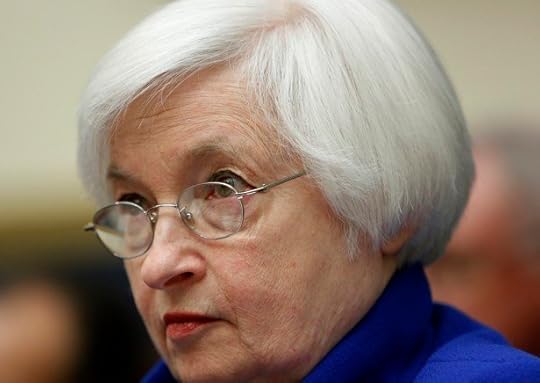
On Wednesday, the U.S. Federal Reserve left interest rates unchanged at its most recent two-day Federal Open Market Committee (FOMC) meeting. For the first time since December, the interest-rate watch was on again as speculation swirled earlier this year that a rate hike was on the horizon in March. That sentiment changed in recent weeks, as economists and investors came to expect that the Fed would hold rates steady this month.
At the FOMC’s December meeting, the Fed raised interest rates for the first time in nearly a decade—the target range for the federal funds rate moved from between 0 percent and 0.25 percent to between 0.25 percent and 0.50 percent.
In a statement regarding the decision to keep interest rates at their current level, the FOMC said that while the U.S. labor market continues to strengthen, global economic conditions remain shaky. The FOMC is also expecting inflation to be low in the near term, as oil prices remain low.
There are expected rate hikes ahead in 2016, though. According to updated projections from the Fed, the median of committee members’ predictions is that the federal funds rate will be 0.875 by the end of 2016—which would mean two quarter-point increases this year.
In a statement, the FOMC wrote:
In light of the current shortfall of inflation from 2 percent, the Committee will carefully monitor actual and expected progress toward its inflation goal. The Committee expects that economic conditions will evolve in a manner that will warrant only gradual increases in the federal funds rate; the federal funds rate is likely to remain, for some time, below levels that are expected to prevail in the longer run. However, the actual path of the federal funds rate will depend on the economic outlook as informed by incoming data.
This means that the upcoming FOMC meetings, which are scheduled for April and June, will be closely watched as well.

Judge Merrick Garland Meets a Senate Blockade
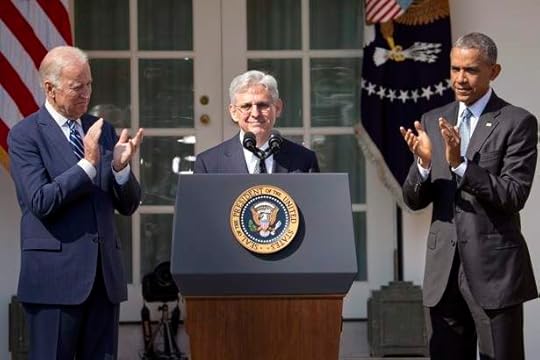
The Senate Republican blockade of the Supreme Court is holding—for now.
Within moments of President Obama’s announcement that he was nominating Judge Merrick Garland to replace the late Justice Antonin Scalia on the high Court, top Republicans reiterated their longstanding vow to ignore him. “It is a president’s constitutional right to nominate a Supreme Court justice, and it is the Senate’s constitutional right to act as a check on a president and withhold its consent,” Senate Majority Leader Mitch McConnell said in a floor speech minutes after Obama and Garland finishing speaking in the White House Rose Garden.
Other senior GOP senators backed McConnell immediately, issuing statements that appeared to be written weeks ago, with Garland’s name added at the last minute. Some didn’t even mention him at all, and that was by design: Where Obama is trying to sell Garland based on his impeccable legal résumé, his judicial centrism, and his selfless devotion to public service, Republicans have committed to opposing him solely on the argument that the presidential election should determine who fills Scalia’s seat. Invoking a 24-year-old speech by Vice President Biden, McConnell said the GOP’s position was “about a principle, not a person.”
In choosing Garland, Obama hopes he is making Republicans an offer they can’t refuse. He bypassed more diverse and clearly progressive choices likely to inspire the Democratic base in favor of a 63-year-old white man who in 2010 had been held up by Senator Orrin Hatch, a senior Republican on the Judiciary Committee, as “a consensus nominee” for the Supreme Court. Six years later, the president called his bluff. “I think highly of Judge Garland. But his nomination doesn’t in any way change current circumstances,” Hatch said in a statement. “I remain convinced that the best way for the Senate to do its job is to conduct the confirmation process after this toxic presidential election season is over.” Hatch was one of seven Republicans currently serving in the Senate who voted to confirm Garland to his current post on the Courts of Appeals for the D.C. Circuit. He was a nominee of President Clinton, and the full vote was 76-23.
Senator Charles Schumer, a New York Democrat and the party’s leader-in-waiting, seemed to sum up Garland’s centrist credentials when he said, “If Merrick Garland can't get bipartisan support, no one can.”
“If Merrick Garland can't get bipartisan support, no one can.”
While some pundits had predicted Obama would pick a more liberal choice to energize Democrats in the election, McConnell argued the opposite. Knowing that Republicans would oppose whoever he chose, McConnell suggested, Obama instead picked someone he didn’t even want to see on the Court. “It seems clear that President Obama made this nomination not with the intent of seeing the nominee confirmed but in order to politicize it for purposes of the election,” he said.
The wild card in the Supreme Court fight is—who else?—Donald Trump. By dividing Republicans so deeply in his march toward the party’s presidential nomination, Trump could give Garland a bit more hope of confirmation. Already on Wednesday, conservatives who believe the GOP is doomed with Trump leading its ticket this fall were suggesting that the Senate confirm Garland once Hillary Clinton wins the election but before she has the chance to nominate someone more liberal. For his part, Hatch told reporters he’d be open to considering Garland in a lame-duck session of Congress, but other Republicans stuck to their position that the nomination should be made by the next president. Both Clinton and Bernie Sanders issued statements supporting Garland, choosing to line up behind Obama rather than push for a more liberal nominee or the chance to pick one themselves.
The immediate goal for Democrats, however, is breaking the Republican blockade, and there were a few early cracks on Wednesday among rank-and-file lawmakers. Senator Mark Kirk, a vulnerable Illinois Republican up for reelection this year, said he would judge Garland on the merits. (Garland was born in Chicago.) Republican Senators Jeff Flake of Arizona, James Inhofe of Oklahoma, Susan Collins of Maine, and Kelly Ayotte of New Hampshire, who is also on the ballot this year, said they would at least meet with Obama’s nominee.
At the White House, Obama lauded Garland as a public servant, noting not only his work as chief judge on the Court of Appeals for the D.C. Circuit but also his success in prosecuting Timothy McVeigh for the Oklahoma City bombing. The president read off a list of compliments from top Republicans and conservatives, including from Chief Justice John Roberts. And he concluding by pleading with the Senate to give Garland “a fair hearing.”
I simply ask Republicans in the Senate to give him a fair hearing, and then an up or down vote. If you don’t, then it will not only be an abdication of the Senate’s constitutional duty, it will indicate a process for nominating and confirming judges that is beyond repair. It will mean everything is subject to the most partisan of politics—everything. It will provoke an endless cycle of more tit-for-tat and make it increasingly impossible for any president, Democrat or Republican, to carry out their constitutional function. The reputation of the Supreme Court will inevitably suffer. Faith in our justice system will inevitably suffer. Our democracy will ultimately suffer, as well.
Garland choked up as he called the nomination “the greatest honor of my life—other than Lynn agreeing to marry me 28 years ago.” He’ll have his chance to make his case to senators directly on Thursday, when he heads to Capitol Hill to begin customary introductions with lawmakers.
The Supreme Court sits just across the street from the Capitol, holding an empty seat that Judge Garland may or may not get to fill. If Wednesday’s statements are any indication, he may get a few meetings with Republicans, but it still seems unlikely he’ll get what he really needs: a vote.

Instagram's Biggest Change Since 2013

Instagram, the eighth-most popular app in America, is about to adopt its biggest change in almost three years—and perhaps ever.
Starting this month, the app will test displaying photos and videos in its main feed out of “reverse chronological” order (that is, “newest first”). Instead, like its parent-company Facebook, it will display them in order of importance, an algorithm determining the photos you are most likely to appreciate.
“You may be surprised to learn that people miss on average 70 percent of their feeds,” writes Kevin Systrom, Instagram’s CEO, in a blog post announcing the change. “This means you often don’t see the posts you might care about the most.”
He finished that thought in a New York Times interview announcing the change: “What this is about is making sure that the 30 percent you see is the best 30 percent possible.”
As technology companies have come to rely more and more on “engagement” as a defining metric, they’ve reoriented their central feeds as Instagram has here. Facebook was the first major social network to embark on this path when it pioneered the News Feed product seven years ago. Even Twitter, which for many years thrived on its chronological, of-the-moment feel, is easing into an algorithmic feed in the hopes of attracting new users.
The introduction of this ranked kind of feed, though, is easily the biggest change to Instagram since the summer of 2013, when it began allowing videos as well as photos. Instagram has always focused on the hour at hand, giving users a sense of immediacy. (Last year, I praised it for this, saying that its feed was easier to skip through because it was mostly images.) Adopting an algorithmic feed will likely alter the ethos of the social network, turning it from a simple chronological list of experiences your friends are having to an implicitly ranked array of content.
We don’t yet know what the feed will accent, though it could imaginably feature photos from friends you often interact with, photos that are generally doing well across the site, and photos from users who post infrequently. Such a feed, I think, will make Instagram feel less timely and more glossy—more like a magazine, less like cable news. And, when users are moving through those first, high-engagement-gathering posts at the top of their feed, I suspect an algorithmic feed will make users even less likely to skip over ads.

The Supreme Court Confirmation Battle Begins
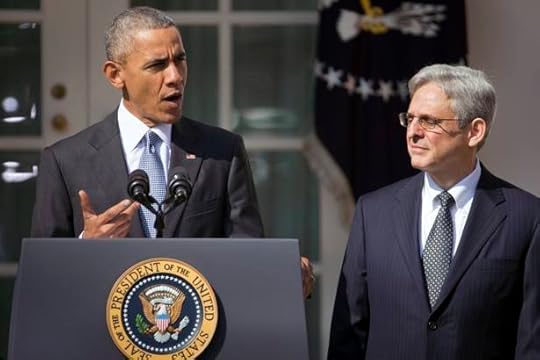
Updated on March 16 at 11:54 a.m.
Let the confirmation battle begin.
President Obama nominated Merrick Garland to the U.S. Supreme Court on Wednesday, setting up a historic election-year showdown over the high court and its future.
“I've selected a nominee who is widely recognized not only as one of America’s brightest legal minds, but also a spirit of decency, modesty, integrity, evenhandedness, and excellence,” Obama said when announcing Garland’s nomination. “He is uniquely prepared to serve immediately.”
Garland is the chief judge of the D.C. Circuit Court of Appeals, which is widely considered to be a stepping stone to the Supreme Court. The U.S. Senate confirmed the 63-year-old jurist to that bench by a 76-23 vote in 1997. The White House said Garland “has more federal judicial experience than any other Supreme Court nominee in history” and praised his “rare ability to bring people together.”
Garland’s nomination bucks some recent trends for presidential nominations to the Court. Both Obama and his predecessor, George W. Bush, opted for younger picks who became reliable liberal or conservative voices on the Court. Garland, by contrast, is older than most of the recent Supreme Court justices at the time of their nomination. Many observers also saw him as a relatively moderate option compared to others on Obama’s reported shortlist.
In other ways, Garland fits the mold of a modern Supreme Court justice. Educated at Harvard, he clerked for legendary federal Judge Henry Friendly and Supreme Court Justice William Brennan after receiving his law degree. He worked in the Justice Department during the Carter administration before switching to private practice during the Reagan years. Garland then became an assistant U.S. attorney for the District of Columbia in 1989 before taking up a senior Justice Department post, where he oversaw high-profile federal prosecutions during the Clinton years.
A formative moment in his Justice Department career came in 1995 when Garland oversaw the investigations and prosecutions in response to the Oklahoma City bombing. He took an intense personal interest in the case, which resulted in a death sentence for Timothy McVeigh and a life sentence for co-conspirator Terry Nichols.
“We promised that we could find the perpetrators, that we would bring them to justice, and that we would do that in a way that would honor the Constitution,” Garland said Wednesday, recalling his conversations with family members of the victims of the attack.
If confirmed, Garland would fill the seat left vacant after the unexpected death of Justice Antonin Scalia on February 13. His elevation would produce a substantial ideological shift on the nation’s highest court. Alongside Justices Ruth Bader Ginsburg, Stephen Breyer, Sonia Sotomayor, and Elena Kagan, Garland would give the Court’s liberal wing a five-justice majority for the first time in almost 50 years.
With the stakes so high, Senate Majority Leader Mitch McConnell and his Republican colleagues vowed within hours after Scalia’s death to not confirm any Supreme Court nominees until after the election. That unprecedented position quickly turned into a broad refusal to hold hearings on the nominee or even meet the person.
Garland's selection did not seem to shake that position.
“It seems President Obama nominated Garland not with the intent of seeing him confirmed, but in order to politicize it for the purpose of the election,” McConnell claimed on the Senate floor shortly after the announcement.
Other senators also reiterated their opposition.
My colleagues and I on Judiciary Committee have already given our advice & consent on #SCOTUSnominee: We won't have any hearings or votes.
— Mike Lee (@SenMikeLee) March 16, 2016
Democrats and liberal interest groups have vowed to make the issue a central one throughout the election, hoping to crack the conservative resistance and energize the liberal base. An intense response by Democratic voters could cause headaches for Republican senators up for re-election in Illinois, New Hampshire, Pennsylvania, and other blueish states. Donald Trump’s potential nomination for the presidency on the Republican ticket could also place vulnerable senators in an even tougher position.
In an email announcing the nomination on Wednesday morning, Obama again urged the Senate to act.
“In putting forward a nominee today, I am fulfilling my constitutional duty,” he wrote. “I’m doing my job. I hope that our Senators will do their jobs, and move quickly to consider my nominee. That is what the Constitution dictates, and that’s what the American people expect and deserve from their leaders.”
The White House also unveiled a verified Twitter account, @SCOTUSnom, as part of its public-outreach campaign.
Filling a #SCOTUS vacancy is not a political prerogative—it is a basic function and fundamental obligation. pic.twitter.com/wHRNpQ2ZlE
— SCOTUS Nomination (@SCOTUSnom) March 16, 2016

How Memento Set the Framework for Christopher Nolan’s Career
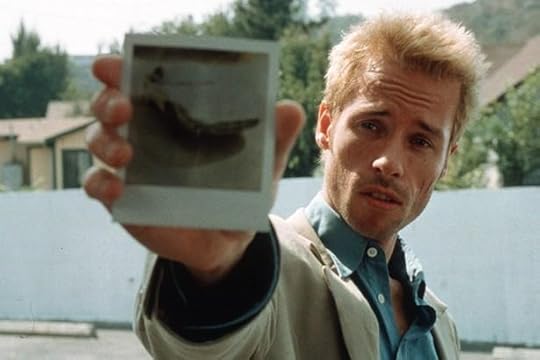
Throughout his career, Christopher Nolan has been making films that double as puzzle boxes; mysteries that unravel with satisfying, precise logic. Toward the end of his 2014 opus Interstellar, an astronaut (Matthew McConaughey) enters a black hole and finds he can manipulate time itself, now manifested as a chamber of memories he can flip through. It’s an epic concept, but also essentially a grander version of a trick Nolan first pulled in 2001 when he made Memento—his second film, an indie smash that vaulted him to the top of the Hollywood heap. Its budget was small, and its story lacked the ambitious sweep that would later define Nolan’s movies, but 15 years after its release, it’s a movie that clearly set the framework for one of modern cinema’s most distinctive directors.
Related Story

I'm Glad Christopher Nolan Won't Be Making Any More Batman Movies
Leonard (Guy Pearce) is seeking to avenge the murder of his wife, who was killed in an attack that also robbed him of his short-term memory. Because of his condition, he’s covered in tattoos to remind him of his mission, and he has pockets full of Polaroids that help him keep track of his friends and enemies. The film immerses the audience in Leonard’s perpetual state of confusion by running backwards: Each scene is followed by whatever happened right before it, proceeding from a murder committed in the first scene through to Leonard’s decision to commit it in the last. It remains a dazzling trick that holds up on repeat viewings, and the chilly precision with which Nolan executed it helped define the indie movies of the aughts, from the time-traveling mathematics of Primer to the high school neo-noir of Brick.
Memento’s trickery echoes the twisty plotting Quentin Tarantino utilized in the ’90s classics Reservoir Dogs and Pulp Fiction, but it feels much more mathematical. As the main plot winds backward, the film consistently cuts to black-and-white segments flowing in the opposite direction, in which Leonard has a paranoid phone conversation in a hotel room and explains the particulars of his condition. At the end of the movie, Leonard leaves the hotel and drives out of town to murder a man he thinks is his wife’s murderer; the black-and-white scenes bloom into color, and it becomes clear that the two ends of the film’s timeline are syncing.
In 1998, Nolan made his debut with the little-seen British crime drama Following, made for just $6,000, which tells a similarly elliptical and twisty tale of criminal intrigue and revenge. Memento, written by Nolan and inspired by a short story by his brother Jonathan, secured a $9 million budget on the strength of his script alone, funded by the now-defunct indie studio Newmarket. It premiered in Europe in 2000, where it was a hit at the Venice Film Festival, and an even bigger one at Sundance the following year, but didn’t secure U.S. distribution despite rapturous reviews. With the support of the director Steven Soderbergh, who talked the film up in interviews, Newmarket eventually decided to distribute it themselves, a risky move that paid off—Memento made a tidy $25 million domestically.
After its U.S. release on March 16, 2001, it was nominated for two Oscars in the Original Screenplay and Editing categories, and although it lost both, it established Nolan as a director to watch. His next project was a remake of the Nordic crime drama Insomnia with Al Pacino and Robin Williams in 2002, before Warner Bros. tasked him with reviving the Batman franchise in 2005, betting big on the hope that an indie director could make the world’s most famous superhero cool again. Nolan succeeded, and he hasn’t looked back since, mostly making widescreen genre epics with huge budgets. Nevertheless, every movie he’s made has one thing in common with Memento: extreme attention to detail.
Nolan has employed that strict framework to pull off dazzling storytelling feats again and again—think of the perfectly-timed dream-within-a-dream heist sequences of Inception, or the showmanship of his Victorian revenge drama The Prestige, which is structured with the practice of an elaborate magic trick. The magic of Memento, at least on first viewing, lies in realizing the intricacy of the plotting, which turns an ordinary neo-noir thriller into a tale of misbegotten revenge. The audience would have no sympathy for Leonard if the story played in proper time—he’s a patsy, an angry, confused man unleashed on local criminals by his manipulative “friends” (played by Carrie-Anne Moss and Joe Pantoliano) who ends up turning on them almost by accident.
But since his story plays in reverse, viewers are just as adrift as Leonard, and only when the credits roll is the totality of his mistakes made clear, not to mention how powerless he was to prevent them. Throughout the film, Leonard talks about Sammy Jankis (Stephen Tobolowsky), a man he knew who had the same condition, whom he paints as a sad fool who couldn’t understand what was going on around him. Eventually we realize that Leonard is Sammy, metaphorically and probably literally, and that Sammy’s tragic tale is just another one that’s become obscured and fudged in his broken brain over the years.
Though Memento deals with tragedy and loss, it keeps Leonard’s wife (played in flashback by Jorja Fox) at arm’s length as a specter haunting her husband, who’s racked with guilt at his inability to protect her. It’s a motif that recurs throughout Nolan’s career, notably with Rebecca Hall’s character in The Prestige and Marion Cotillard’s in Inception (the latter manifests only as a memory who stalks Leonardo DiCaprio’s Cobb through his dreams). That chilliness, combined with the meticulous attention paid to plot, can make Nolan seem a dispassionate engineer who calibrates everything a little too carefully, including his film’s emotional cores. That’s certainly his signature, and it’s one shared by many of the wunderkind directors who came up in Hollywood at the same time.
M. Night Shyamalan worked in more sentimental territory but with the same tight focus on plotting and story twists, a trope that eventually tripped him up after early hits like The Sixth Sense, Unbreakable, and Signs. The Wachowskis, who directed The Matrix (also starring Carrie-Anne Moss and Joe Pantoliano), matched Nolan’s dispassionate precision on a titanic scale, conjuring action among the monolithic cityscapes he’d eventually mimic in Inception. Indie filmmakers like Shane Carruth (who made Primer and Upstream Color) and Rian Johnson (Brick, Looper) built complicated mysteries within low-budget films, adhering to painstaking logic that watchful fans could unpack, ever so slowly, with multiple viewings.
Nolan’s monolithic style marches on—with Batman behind him and the sci-fi majesty of Inception and Interstellar accomplished, he’s now making a World War II film, Dunkirk, that could pose new challenges. But Memento’s DNA will always be present in his movies. Some directors make calling-card films that establish them in Hollywood, then immediately veer off in different directions, be they mainstream or arthouse. Nolan has always stuck his course. Memento is the brilliant Rube Goldberg machine it was 15 years ago, surprising new viewers with its backwards-spooling plot and enchanting rewatchers by holding up under scrutiny. It’s a gimmick, but one that feels philosophically pure—and it’s that rigor that makes it impossible not to anticipate what he does next.

The Cost of Stealing a Sign: 15 Years of Hard Labor
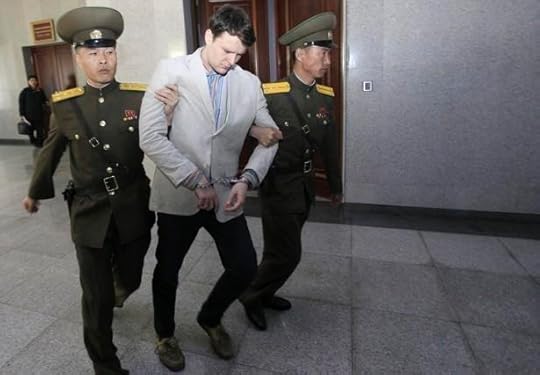
Updated on March 16 at 3:47 p.m. ET
North Korea’s Supreme Court convicted Otto Warmbier, a 21-year-old student at the University of Virginia, of subversion and sentenced him to 15 years of prison and hard labor.
Here’s a timeline of events that resulted in the conviction of the native of Wyoming, Ohio:
—December 29, 2015: Warmbier arrives in North Korea as part of a tour group.
—January 2: He is detained at Pyongyang airport while leaving the country, according to Young Pioneers, the tour company with which he was traveling.
—January 22: North Korea made his arrest public, saying Warmbier was detained for “anti-republic activities.”
—February 29: Warmbier was made by North Korean authorities to publicly confess to his alleged crime: stealing a propaganda sign from his hotel.
—March 16: Warmbier is convicted and sentenced to 15 years of prison and hard labor.
It’s unclear if Warmbier’s public confession was coerced. His hands were free and he wore civilian clothes as he read from a prepared statement on February 29. In it, he called his alleged actions “the worst mistake of my life,” and said he did it at the behest of a member of the Friendship United Methodist Church in his hometown that wanted it “as a trophy.” In exchange, he said, he would receive a used car worth $10,000. His actions, he said, were also on behalf of the Z Society, a college group at the University of Virginia that Pyongyang alleges is a front for the CIA. Both the church and the Z Society have rejected the claims.
Warmbier’s conviction comes amid increased tensions between the U.S. and North Korea over its nuclear test in January and missile launch. Those actions prompted enhanced UN sanctions, as well as U.S. sanctions that were announced Wednesday, against the North, which responded with threats against South Korea, Japan, and the U.S.
Pyongyang could be using Warmbier as a bargaining chip to earn concessions from the U.S. It would not be a new approach. The U.S. and North Korea do not have diplomatic relations, and U.S. interests in Pyongyang are handled by Sweden. This doesn’t prevent American tourists from visiting, but it does complicate Warmbier’s fate—though other Americans who have been jailed in North Korea have been freed following high-profile visits to the country by American dignitaries.
Warmbier’s alleged crime—stealing a propaganda sign from a hotel—may sound trivial, but it is in line with other actions that have resulted in charges against Americans visiting North Korea. One recent visitor was detained for leaving a Bible at a restaurant, another for tearing up his tourist visa. Both were later freed following U.S. intervention, as was a Korean-American missionary.
There is at least one other American in detention in North Korea—a South Korea-born naturalized U.S. citizen who was detained last October on espionage charges.

How Can the U.S. Shrink the Influence of Money in Politics?
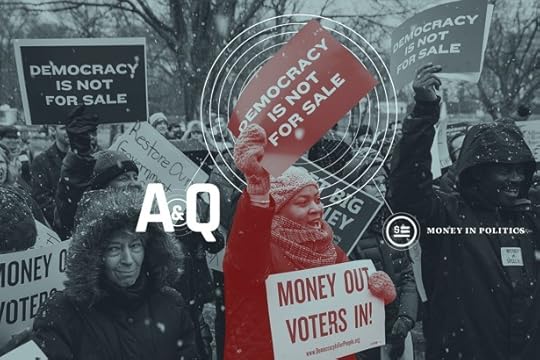
A&Q is a special series that inverts the classic Q&A, taking some of the most frequently posed solutions to pressing matters of policy and exploring their complexity.
There’s no separating money from politics. Or is there?
Money and its potentially corrupting influence is at the very heart of complaints about politics in the United States, and every two years, many candidates promise voters that they’ll try to reform a system that they say has been broken by congressional inaction and the Supreme Court.
Over the last year, Bernie Sanders has built his presidential campaign around the charge that the influence of wealthy individuals and corporations in elections has led to the passage of laws that have widened the chasm between the rich and the poor. Hillary Clinton has also called for significant campaign-finance reform, and even Donald Trump has joined in, calling out his Republican rivals for being beholden to their major donors. Most other Republicans have rejected calls for reform on the principle that political speech should not be restricted.
Here we take a look at the claims about the influence of money on politics and the various proposals to reduce it.
ANSWER
The problem of money in politics is so universally recognized that even Donald Trump, the ultimate capitalist, and Bernie Sanders, a self-described Democratic socialist, agree on it. Sanders has spent his career railing against the corrupting influence of wealthy and corporate donors, while Trump has unmasked the game by admitting that he gave money to politicians to curry favor with them. The success of both of these politicians suggests the degree to which Americans are fed up with the influence of money on politics. If we don't reduce that influence, our system risks losing its legitimacy.
QUESTION
Trump’s truth-telling aside (if that’s what it is), this premise is much shakier and polarizing than political rhetoric often makes it seem. Can money be separated from politics?
The answer to that is almost certainly no. At their core, democratic elections are a battle of personalities and ideas, and the only way to inform voters about their choices in an election is make sure that the messages of candidates reach them. And just about any way you cut it, that’s going to cost money—whether it’s to pay for advertising, to set up and run a website, to hire people as staffers, or to hold rallies or events that the media will cover. Campaigns for local office can often be run on the cheap. Candidates rely on volunteers to run their campaigns and on social media, rather than paid advertising, to spread their message. But they're never totally free.
The Holy Grail for many campaign-finance reformers is publicly-funded elections, but even in cities and states that have them currently, most are based on matching funds, which requires candidates to raise a minimum amount of money to demonstrate viability. And proposals for public funding of elections in Congress don’t totally eliminate private donations, either.
Related Video
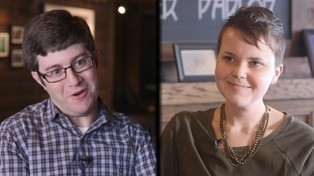
Does Money Really Buy Elections?
So that leads us to a second question: If we could separate money from politics, should we? This is really the fundamental divide over campaign financing in the United States. The Supreme Court’s 2010 decision in Citizens United v. Federal Election Commission was based on the principle—long shared by conservatives—that campaign contributions are a form of political speech protected by the First Amendment. And to the dismay of most Democrats, the Citizens United ruling extended those protections not just to individuals but to corporations (and labor unions), leading critics to charge that the Supreme Court had decreed that corporations were effectively the same as people.
Whatever the interpretation, the ruling inarguably allowed wealthy individuals, businesses, and other groups to use money to influence elections with more freedom than they had before.
ANSWER
If Citizens United was so pivotal in aggravating the problem, the Supreme Court should overturn it. The ruling misinterpreted the First Amendment as a protection of money in politics, and it conflated corporations with individuals in a way that opened the floodgates for companies to spend millions—or even billions—to influence elections.
QUESTION
What precedent is there for the Court to reverse itself so quickly and dramatically?
Right now there's a vacancy on the Supreme Court, and whoever replaces the late Justice Antonin Scalia could determine the fate of Citizens United. Both Hillary Clinton and Bernie Sanders have pledged to appoint someone who would overturn the 2010 ruling, and while that’s a litmus test that President Obama hasn’t explicitly endorsed, it’s unlikely that anyone he nominates will win confirmation by the Republican-led Senate. The GOP presidential candidates, by contrast, are pledging to appoint a justice in the mold of Scalia, who voted in support of Citizens United. Still, even if a Democratic president decides Scalia’s replacement, the decision is now a precedent of the high court, and there’s no guarantee the justices will revisit the case—or a similar challenge—in the immediate future.
Even if the Supreme Court did reverse itself, would that have the effect of significantly reducing money in politics? Overturning Citizens United could lead to restrictions on or the elimination of super PACs that have sprung up as a result of the ruling and subsequent decisions by lower courts. Super PACs cannot contribute to or coordinate directly with candidates, but they can raise and spending unlimited amounts of money to support or oppose them.
And the Supreme Court has loosened campaign-finance regulations in other ways, such as a 5-4 ruling in 2014 that scrapped the limits on the total amount of money that wealthy donors could contribute to candidates and committees. “There is no right more basic in our democracy than the right to participate in electing our political leaders,” Chief Justice John Roberts wrote in the decision. “We have made clear that Congress may not regulate contributions simply to reduce the amount of money in politics, or to restrict the political participation of some in order to enhance the relative influence of others.”
It’s also important to remember that prior to the ruling, wealthy corporate interests had plenty of latitude use their money to influence elections. Remember the Swift Boat Veterans for Truth, which tore into John Kerry's Vietnam record with the help of millions of dollars from conservative donors in 2004? Money played a big part in elections before the Citizens United decision, and it will play a big part even if it is overturned by the Supreme Court.
ANSWER
If overturning Citizens United won’t fix things, we should toughen up disclosure requirements so that at least people will know what individuals and organizations are paying for the ads they see on TV.
QUESTION
How would you get Congress to act on this, given their inability to muster the votes to boost disclosure in the past? Even in Citizens United, the Supreme Court made clear that it was not restricting Congress’s ability to require organizations to disclose their donors. But Congress isn't likely to budge anytime soon.
The Republicans in charge of the House and Senate—and in particular Senate Majority Leader Mitch McConnell—oppose campaign-finance restrictions on principle. Even when Democrats had the majority, they fell a single vote short in the Senate of passing the Disclose Act, which would have toughened transparency requirements in response to Citizens United.
One of the big fears among good-government groups after Citizens United was that wealthy donors, corporations, and unions would not only be able to spend unlimited sums of money, but that they would try to do so secretly because of the loose disclosure requirements that allow donors to funnel money to super PACs through committees that don’t have to disclose the source of their contributions.
On the presidential level, that hasn’t played out quite so dramatically—if only because so many of the wealthiest donors in both parties have made donations directly to super PACs supporting candidates, allowing their names to be attached to them. But according to one analysis cited by Bloomberg News, secret money accounted for two-thirds of the political-ad spending in the 2016 campaign through the end of January.
ANSWER
Forget the wealthy and corporations. They’re always going to have influence in elections, one way or another. We need to focus on empowering average people by reinvigorating and expanding the public-financing system for campaigns, both on the federal and local levels.
QUESTION
How could the government get enough money to finance elections at a level that would be an effective counterweight to the oodles of private money out there? Ironically, it may have been Barack Obama who killed the federal public-financing system for presidential elections when he opted not to participate in 2008, despite his support for public financing in principle.
Since then, neither Obama nor any of the Republican nominees has accepted federal matching funds in exchange for strict limits on campaign spending, and neither of the nominees this year is expected to, either. The presidential race has simply become too expensive for Democrats to “unilaterally disarm” and agree to restrict their spending, the argument goes, and Congress has not updated the program in more than 40 years.
The odds may be long, but Democrats and advocates for campaign-finance reform have been pushing to modernize and expand the system. One proposal, known as the Government by the People Act, would have the government match small-dollar donations at a 6-to-1 rate (or higher under certain conditions) while also giving people a $25 refundable tax credit to encourage political donations.
The Fair Elections Now Act has similar provisions but would also allow candidates to raise unlimited donations so long as they did not individually exceed $150. The idea is to level the playing field for candidates who can demonstrate a minimum level of support while also helping to free up incumbent members of Congress from the burden of spending hours each day dialing for dollars rather than working on legislation or helping their constituents. Neither of these bills have any chance of passing, however, under a Republican-controlled Congress.
As with many election reforms, the action is now mostly at the local level. Last November, Seattle voters approved a system whereby citizens could contribute to candidates in local races without spending a dime of their own money. The city government will instead send registered voters four $25 vouchers that they can give to the candidate of their choice. “The promise of vouchers is turning every single voter in the city into a donor,” Alan Durning, the executive director of the Seattle-based Sightline Institute, told me in the fall.
Yet even if public financing empowers ordinary citizens, it is not a panacea for political corruption. Just look at New York City, which has had both a popular public-financing system for decades and no shortage of crooked local legislators in recent years.
ANSWER
To play devil’s advocate for a second, maybe money really isn’t as big of an influence in politics as it’s cracked up to be. After all, Jeb Bush and the super PAC supporting him spent $130 million and won nothing in 2016. Michael Bloomberg is one of the richest men in the country and although that bought him three elections as mayor of New York, he determined that not even $1 billion could buy him the presidency. And Donald Trump is winning without spending a ton of money, in relative terms.
QUESTION
You’re right—Jeb Bush didn’t do well even with all the money spent on his behalf, but you could also argue that if he didn’t have the cash he did, he would have dropped out long before Republicans even started voting.
The same is true of Ben Carson, who stuck around long after his poll numbers cratered. And, yes, it’s true that Trump has succeeded not because of how much money he’s spent but how successful he has been at getting the media to cover him—allowing him to get his message out nearly for free. There are so many factors that figure into a presidential race that money is not always paramount.
But what about congressional, state, and local elections that don’t get as much media attention? In those contests, money can play a much bigger role. It can be the difference in whether a candidate gets noticed or an issue gets raised, and which side spends the most is more often a determining factor in the outcome of an election.
***
These are some of the intriguing questions left to consider:
What is the role of the Federal Election Commission, and how can it better enforce the campaign-finance laws that are already on the books?
How much would it cost to implement a public financing system that candidates would actually participate in?
After Citizens United, what is the remaining legacy of the McCain-Feingold Campaign Finance Act of 2002?
Besides various forms of public financing, what other proposals could reduce the influence of money in politics?
Maybe there’s an answer we haven’t considered yet. Drop your thoughts into an email to hello@theatlantic.com .

Atlantic Monthly Contributors's Blog
- Atlantic Monthly Contributors's profile
- 1 follower



